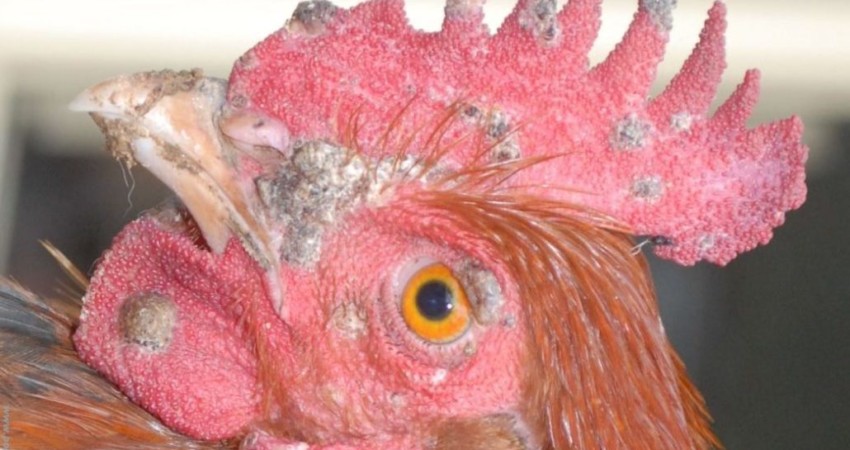

Fowl Pox disease is common to all forms of poultry – commercial layers, breeders, broilers and village chickens. It is caused by the fowl pox virus and can be transmitted by direct contact with infected or carrier birds, as well as water or feed where infected chickens have been introduced into the flock.
Mosquitoes and other flying, biting insects can transmit the virus from bird to bird, as well as from flock to flock.
Infected vaccination needles can also transmit the virus from infected chickens to susceptible chickens. Incubation takes between 4 and 20 days.
Clinical signs can be external : dry pox – which is found mainly on the head, or internal: wet pox – which appears in the mouth, oesophagus and trachea.
Internal lesions are yellow or white and “cheesy” in appearance. The lesions on the head, combs and wattles are usually wart-like and range in colour from yellow to dark brown.
Affected chickens are depressed, lack an appetite and, in the case of wet pox, breathe with difficulty.
In laying hens, egg production could drop off returning to expected levels after a few weeks.The mortality is variable, from a low 1% to 2% in dry pox to up to 30% in the case of wet pox.
The lesions, together with the history, are indicative of fowl pox.
Treatment is difficult, but the use of topical ointments on external lesions is indicated.
Add a vitamin/mineral pack to drinking water; ensure that mosquitoes are eradicated and ensure that the chickens are correctly vaccinated.
 Contact Jaguza Support
Contact Jaguza Support